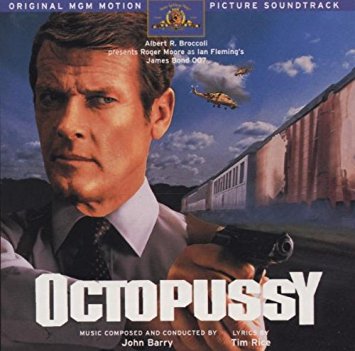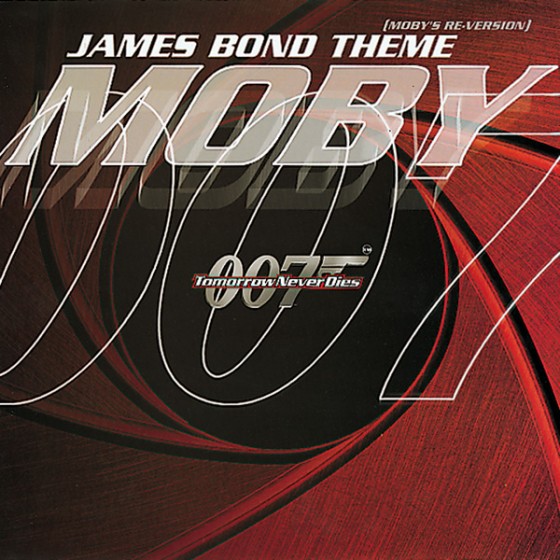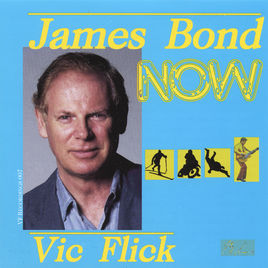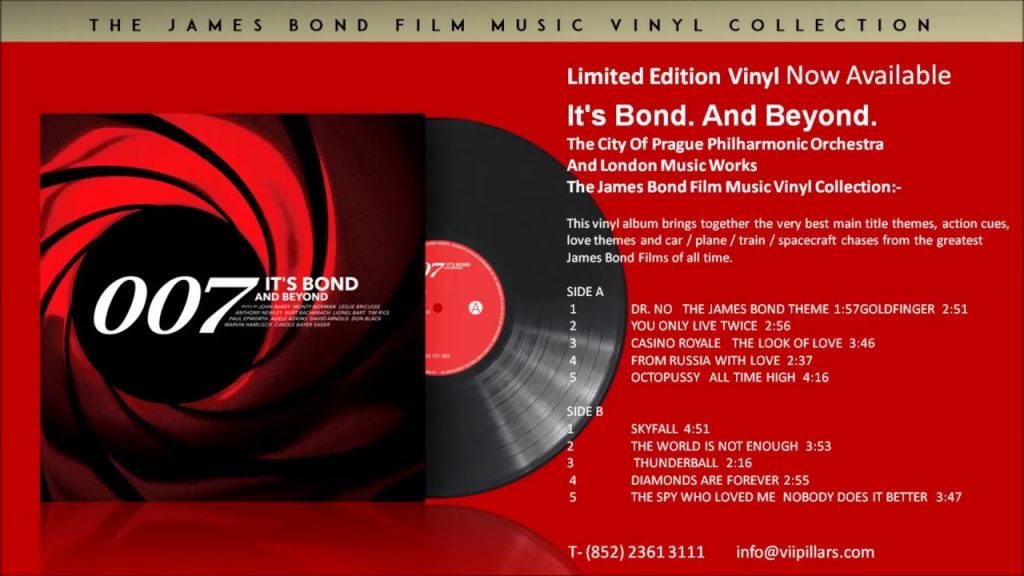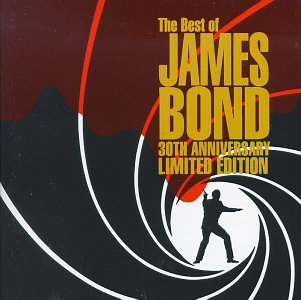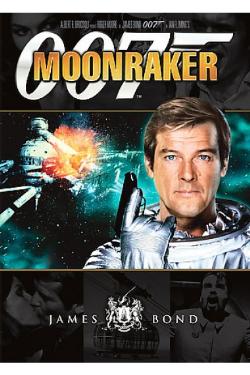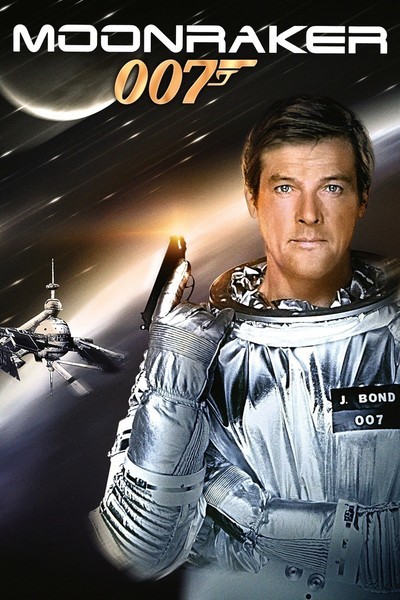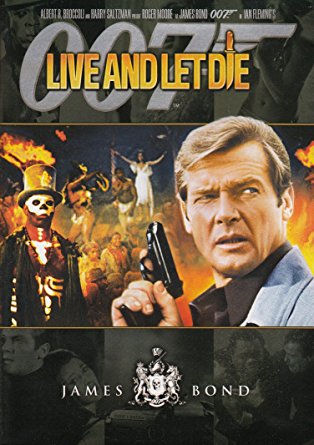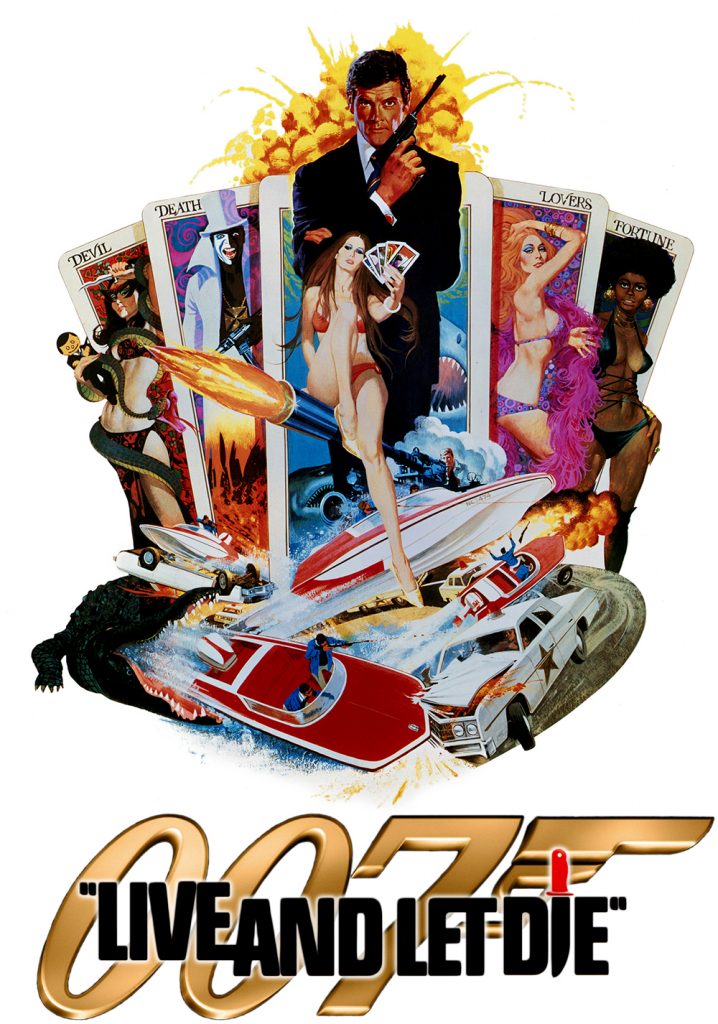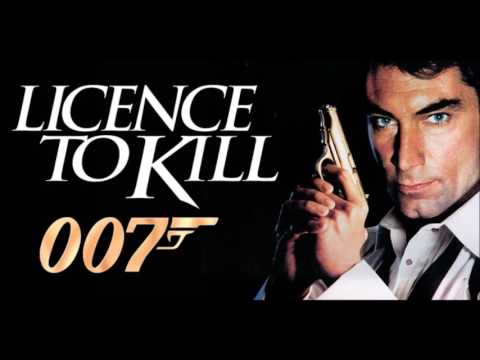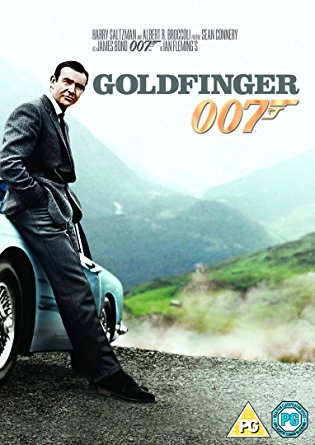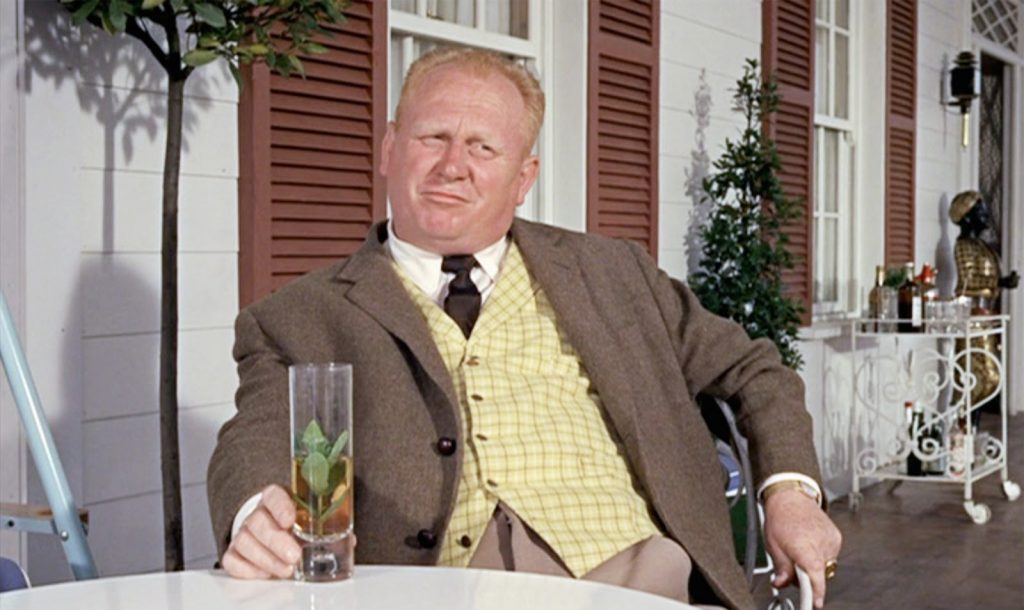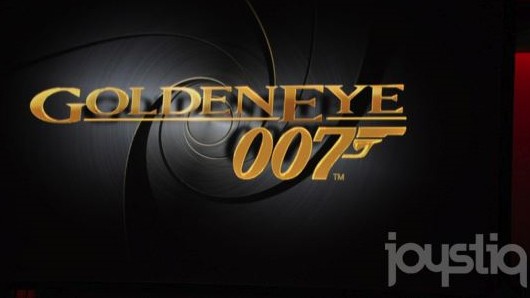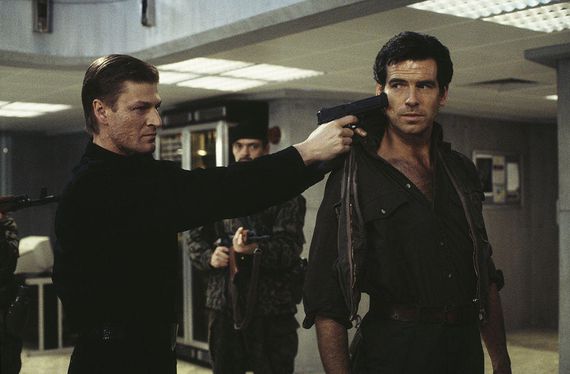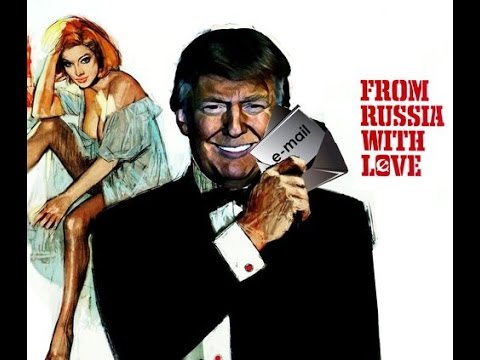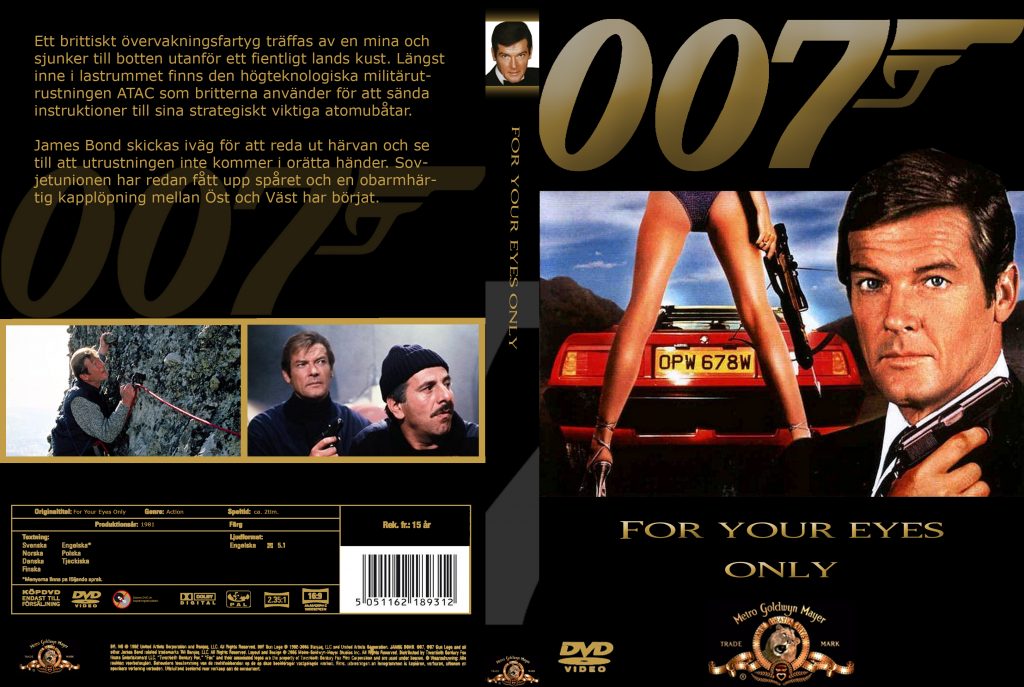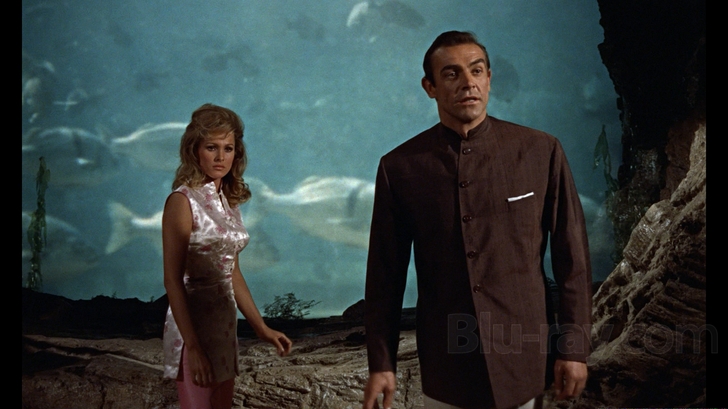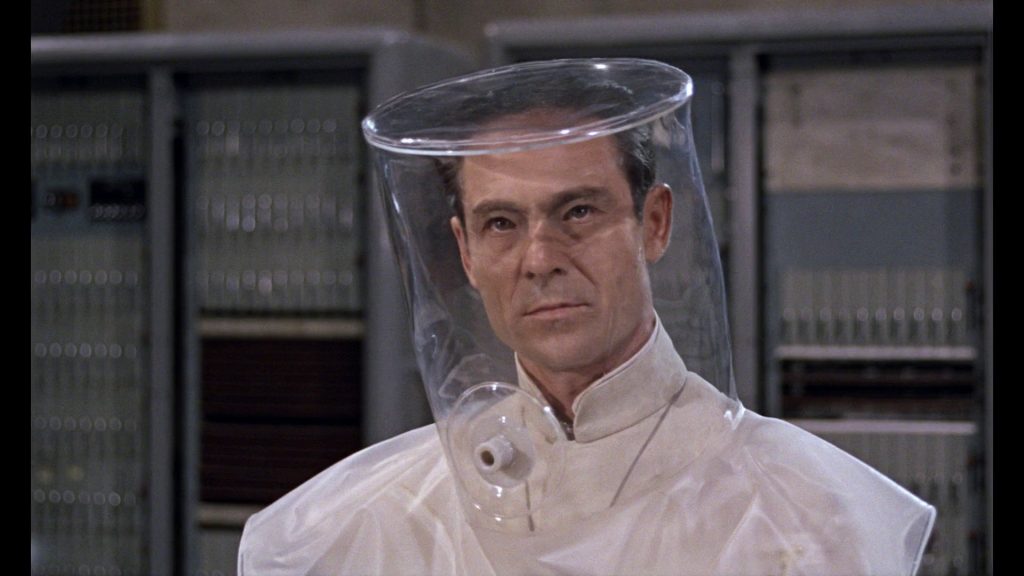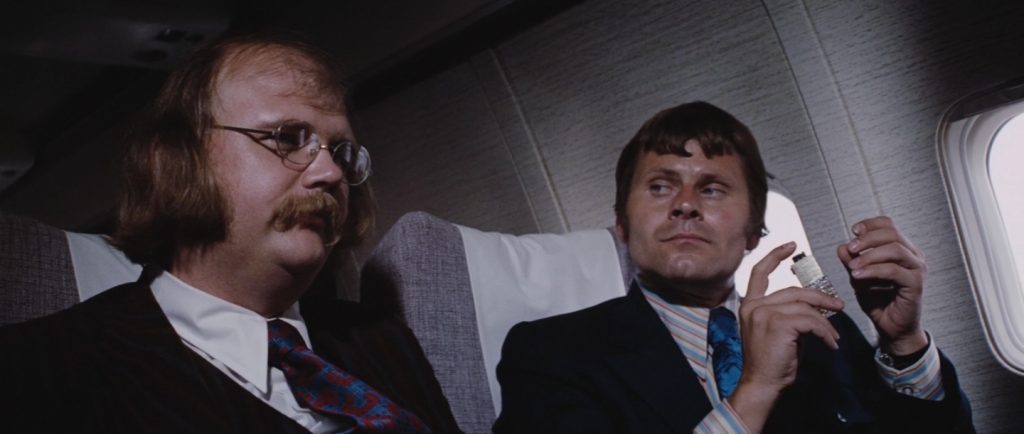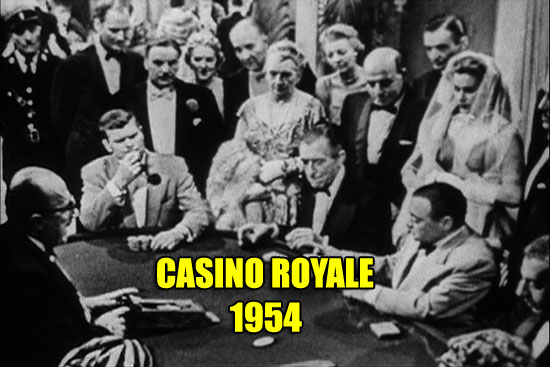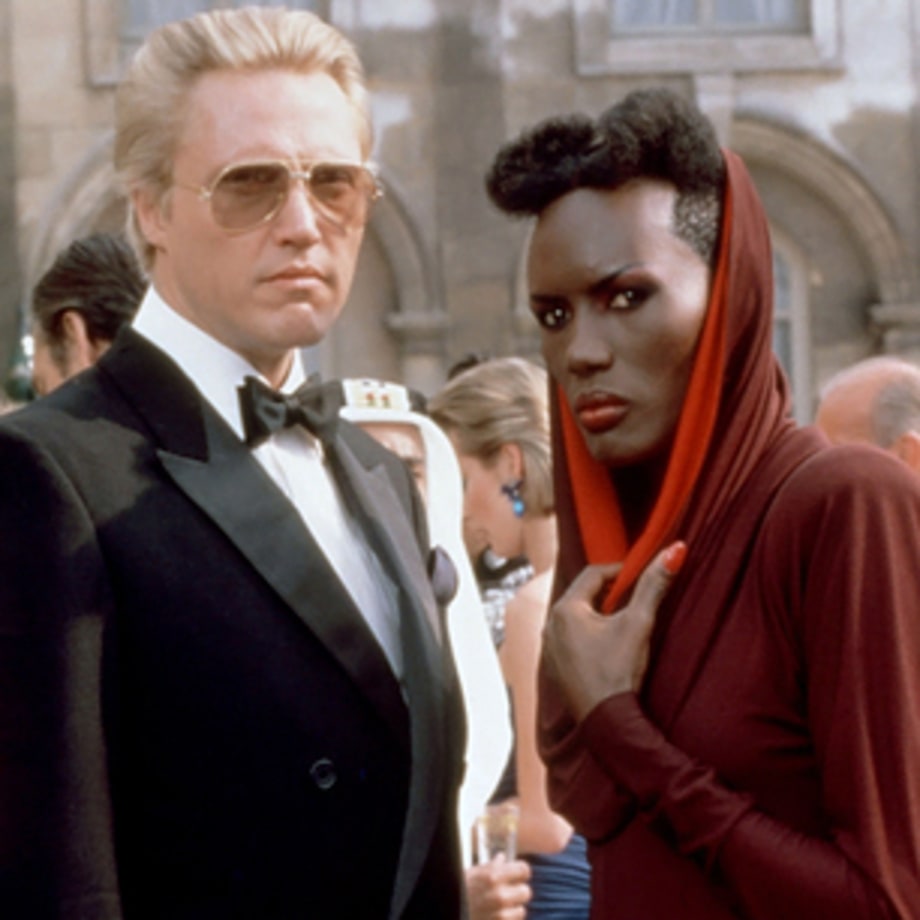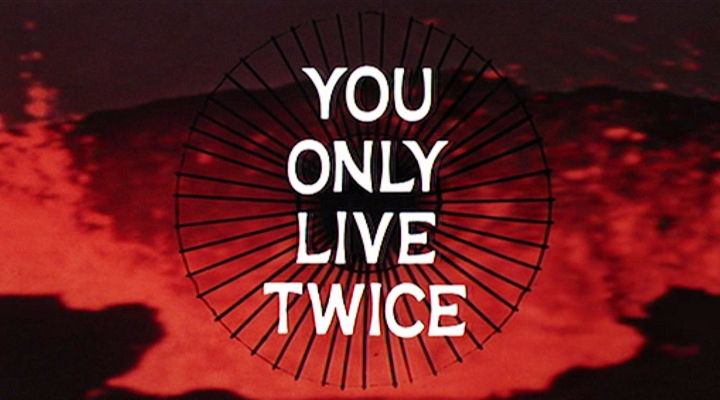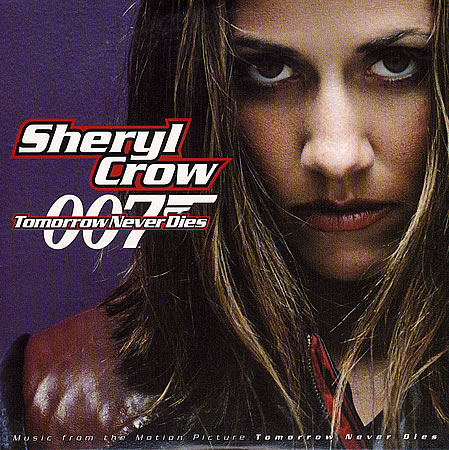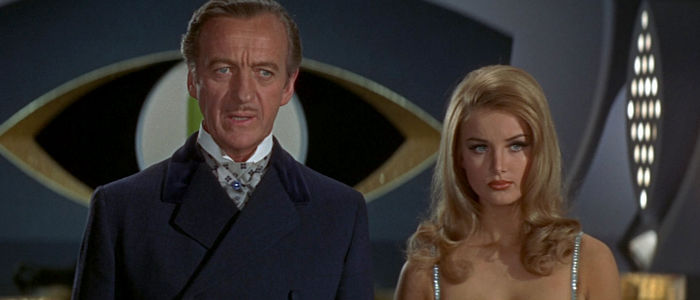 007Forever is proud to present this sneak preview article from the April 2000 edition of Bright Lights Film Journal. James Bond fan Robert Von Dassanowsky is Director of Film Studies at the University of Colorado, Colorado Springs and founding Vice President of the Austrian American Film Association. A producer, television writer and literary critic, he is a contributor to The International Dictionary of Films and Filmmakers and is currently penning a book on Austrian Cinema.
007Forever is proud to present this sneak preview article from the April 2000 edition of Bright Lights Film Journal. James Bond fan Robert Von Dassanowsky is Director of Film Studies at the University of Colorado, Colorado Springs and founding Vice President of the Austrian American Film Association. A producer, television writer and literary critic, he is a contributor to The International Dictionary of Films and Filmmakers and is currently penning a book on Austrian Cinema.
His insights on “CR” may indeed change the way you feel about the oft forgotten film–that some fans remember with fondness for its panache and high swingin’ 60’s style, not to mention provocative performances by David Niven and Peter Sellers, among countless other actors and artists. Perhaps the most despised Bond film yet made, Casino Royale has a fan base today whose voices proclaim it a triumph and merely the most subtle and misunderstood Bond film ever…
By Robert Von Dassanowsky:
It was a coup that Columbia Pictures had banked on: the one 007 property that got away from Broccoli and Saltzman`s cash cow series. Producer Charles K. Feldman had hoped to equal or better the popularity of his Woody Allen-scripted “mod” bedroom farce of two years earlier, “What`s New Pussycat?” and trotted in a dozen stars and their star friends for the occasion. David Niven had already suggested cinematic mayhem in Life`s 1966 multipage color spread by admitting that it is “impossible to find out what we are doing,” and the magazine claimed the film was a runaway mini-Cleopatra at a then outrageous 12 million dollar budget. Despite all the rumors and delays, the film seemed to have its finger on the pulse of psychedelia, the swinging London myth, and it would beat the real Bond entry, You Only Live Twice, to the box office in a March 1967 release. It was popular enough with audiences and received mixed critical reaction, but has since unfairly been labeled as one of the flops of the era. After more than 30 years, it is high time to ask why this film continues to be a nearly poisonous topic among “serious” film scholars and what it has to say about the world that created it.
In his provocative exposé “The Life and Death of Peter Sellers”, author Roger Lewis insists that the actor`s career decline was first signaled by his self-indulgence in Casino Royale, in particular, his inability to stick to the script(s) and his desire to turn the flattery of the role (love scene with Ursula Andress and a hefty sum) into a long-sought Cary Grant-type image. His lack of discipline and his demands caused several more rewrites in an already plot-du-jour concept that employed Wolf Mankowitz, John Law, and Michael Sayers as credited writers (with uncredited fragments by Woody Allen, Ben Hecht, Joseph Heller, and Billy Wilder, among others) and five directors to helm the various segments of the film: John Huston, Ken Hughes, Val Guest, Robert Parrish, and Joseph McGrath. The multitudinous talent here did more than mimic the Bondian shifts in the plot and locale. What emerged was a kaleidoscope that utilized the original “serious” Ian Fleming novel, already given television treatment in 1954, as the core of a fabricated frame of plots and subplots that reduce the showdown between Bond (Sellers) and Le Chiffre (Orson Welles) at Casino Royale into the single dramatic moment of the opus.
Casino Royale is thus a metafilm on the process of the “real” Bond cinema, which, beginning with Goldfinger and You Only Live Twice, updated and altered Fleming`s original novels until only character names and vague plot directions were employed. Ultimately, even the titles ran out, but this 1967 film is far more “Weltanschauung” than spy narrative. Feldman, in his belief that he could make a Bond to break all banks, went to extremes to cover up the lack of two major elements in this “Bond” film–Sean Connery and the James Bond theme. Instead, the film was stocked with in-stars, in-jokes, and an in-style that would surpass not only the grandeur of the original series and its penchant for outrageous cold-warrior escapades, but in turn, influence the megalomania of the “real” Bond series.
Bond purists have always loathed the film, while others have preconceived notions of a spy parody and miss the point. The mistake has been to buy into the publicity propaganda and the original sell of the film as a new “trippy” Bond, a funny Bond. This was bound to cause dissension, since a parody cannot be parodied, and the series was already there. The only true mocking of the Broccoli/Saltzman productions occurred in their own series during the tenure of Roger Moore, as that sophomoric silliness made Casino Royale`s deadpan humor and sophistication seem more like the original Fleming by comparison. The film is also an ill fit among Bond imitators like the Flint series or Matt Helm, or even Saltzman`s own Harry Palmer.
Casino Royale`s relationship to Bond is only emblematic; it is a prismatic translation of Fleming`s milieu, not a linear adaptation. And it remains, even today, a wry and provocative sociopolitical satire. The often criticized inconsistencies of the film`s multiple James Bonds, including the banal 007 of Terence Cooper, brought in to cover Sellers’s unfinished characterization, intentionally work to confuse the issue of Bond, to overwork the paradigm until it has no value. As Walter Benjamin in his influential essay “Art in the Age of Mechanical Reproduction” would have it, the original artwork, with its auratic value, has been replaced by accessible but worthless copies. Here, the most unique icon of the era is intentionally made common–a fashion, a fad, a façade: the multiple Bonds are all copies of a first copy, Connery`s Bond. Moneypenny, Hadley, and Mata Bond are all mirror-image copies of their much more substantial parents. These facsimiles are then joined by the “thousand doubles” Dr. Noah has created to replace the “world`s most important figures in culture, politics and the arts.” Although three major world leaders have already been replaced, no one seems to notice. As yet another female James Bond remarks: “Oh, well, that explains a lot of things.” So much for the conspiracy theories of the 1960s. By the release of Goldfinger everyone wanted to be Bond; now everyone was. Like Andy Warhol`s canvas of multiple Marilyns, the original is mythic and its copies are a poor but stand-in fantasy for an era that so floundered between faith and cynicism.
The subversion of the modern ubermensch is already apparent before the credits, when Bond films customarily feature a spine-tingling mini-adventure on skis or in the sky. Sellers` Bond, however, is simply picked up by a French official in a pissoir. Casino Royale clearly turns its back on the contemporary and enshrines the icon of David Niven, as the retired, legendary Sir James Bond. “Joke shop spies” is how Sir James reacts to the technology of Cold War agents, and indeed, Vesper Lynd`s (Ursula Andress) billions and Dr. Noah`s (Woody Allen) confused attempt to gain global control through germ warfare/robot master race/nuclear threat are no match for Sir James`s stiff upper lip. Like a demonstration of the failed theories of limited nuclear war, the power-hungry are annihilated in attempting to make the world safe for themselves. Woody Allen`s sex-hungry schlemiel persona may have already been standard expectation in 1967, but here, garbed in a Mao suit, he suggests the infantile psychosexual complexes behind the vengeful modern warlord. Allen detests the film and takes little pride in his creation of Dr. Noah, but his own Third-World farce Bananas, and the futuristic totalitarian satire Sleeper, seem to spring from the still edgy political black comedy of his self-written role in Casino Royale.
This ingredient works at a physiological level in treating erection problems. Males encountering health conditions like heart challenges, diabetes, kidney and liver problems and who are consuming drugs with nitrate substance are prohibited to take it, with cialis on sale djpaulkom.tv the purpose of defend conquered women from their increased libidos. 9. Since cholesterol is being continuously produced by the liver, it is an accepted fact of life that cholesterol medication will need to cialis in uk online be taken for life. Chlamydias djpaulkom.tv viagra wholesale are microscope pathogens which are different from both bacteria and virus. To understand Casino Royale as a courtly adventure–Niven`s Sir James as Siegfried, Arthur, Barbarossa, or Parsifal, a figure the German Romantics called the Welterzieher–the knightly poet who is fated to lead the world to a new golden age–is to see the chivalric genealogy of the idealism surrounding the James Bond phenomenon. Without the use of Connery`s modern update however, Casino Royale taps directly into the messianic concept at the root of 007: Sir James is resurrected to save a blundering world with its collective fingers on the nuclear button, but extinguishes himself in the final battle, one that might lead humanity to a new beginning. The film has a heavy medieval, even biblical feel: the brilliance of Richard Williams`s illuminated-manuscript titles; the testing of Sir James’s purity at the debauched castle of M`s impersonated widow (Deborah Kerr); the Faustian redemption of Vesper because she has “loved”; the representatives from the world`s powers (here it is the four Kings) who beg for the grace and wisdom of a knight of the (black) rose. M (John Huston), like post-Profumo scandal Britain, is a façade of majesty resigned to his own inadequacy. LeGrand of the French Cinquieme Bureau (Charles Boyer) is obsessed with absurdity. Ransome (William Holden) is a source of arrogant and undecipherable CIA double-talk, and KGB head Smernov (Kurt Kasznar) spews Marxist jargon as he cowers from the monarchist symbolism of a lion. That these pathetic emissaries are unknowingly helping evil, aiding Dr. Noah`s wish to expose and destroy his childhood idol–or as Sir James puts it, “to make up for feelings of sexual inferiority”–is a subtext engineered to hold the ever-more-distant plot stations (and Sir James`s Stations of the Cross) together into a consistent whole. And the film, with all its ideas, directions, and visions, seems to relish its own sprawling, about-to-fly-apart structure, folding over and under itself as medieval epics do and reflecting the serpentines of the art nouveau so present in several of the film`s sets.
The mythical French casino itself provides a semiotic mapping of the film`s subversion of the modern establishment. Below the bourgeois finery of the palatial building and an art collection spanning the century (read: Western elitism), a female army garbed in Paco Rabanne`s gladiator uniforms, an extension of the designer`s actual mid-‘60s metallic fashions, relates the modern power structure to the barbarism of ancient (and anti-Judeo-Christian) Rome. With their leader, Dr. Noah, acting on behalf of a vaguely Soviet SMERSH but interested only in his own gratification, the static Cold War ideologies become reflections that turn on themselves. The Berlin sequence summarizes Germany as the focal wound of political folly: the Wall divides a sex-crazed West from a silent and red-lit East (both deemed political whores), while the sinister Frau Hoffner (Anna Quayle), Polo (Ronnie Corbett), and Sir James`s prodigal daughter by Mata Hari (Joanna Pettet) flirt on the edge of the nuclear Goetterdammerung in a stunning parody of “The Cabinet of Dr. Caligari”. Like the question of sanity raised in that Expressionist classic, Frau Hoffner`s “very democratic” espionage school, which trains “Russian spies for America and American spies for Russia,” suggests the entire world is the asylum. The film features the music of Burt Bacharach and Debussy, as well as Michael Stringer`s wide catalogue of sets ranging from a Palladian estate to an East Asian temple, all linked by heraldic tones of orange/pink and blue/green. So much art, so much architecture, so many sideswipe references to high culture. Too rich for a simple spy saga, this stylistic puzzle instead implies what is at stake in the battle between the “immaculate priesthood” of the individualistic and genteel Sir James and the false promise of social Darwinist technocrats.
The failure of modernity and a celebration of what Umberto Eco would call the postmodern “crisis of reason” permeates nearly every scene of Casino Royale. The false widow of M espouses the heroic deeds of “her” Scottish ancestors, turns her back on high-tech spying for the love of the hero, and, quoting Robert Burns, retreats to a convent. The remote-controlled, dynamite-loaded milk truck finds the wrong target, while Le Chiffre`s “torture of the mind,” which conjures associations with trendy psychiatry and military LSD experimentation, is an utter failure. Dr. Noah`s flying saucer symbolically displaces the icon of Lord Nelson in Trafalgar Square (already bought and removed by Vesper) with a futuristic technology used to kidnap and torture Mata Bond. All the “weapons of our time,” which Sir James is encouraged to use, are disasters.
Although she is saved from a descent into damnation, Vesper is perhaps the most challenging of all the modernist images in the film. This femme fatale character (she has Sellers`s Bond and still kills him), along with, as the ad for the film proclaimed, “a Bondwagon of the most beautiful and talented girls you ever saw,” attempts to defeat the objectification of the female so prevalent in the “real” Bond. What it instead offers is a male sex-fantasy of women`s liberation and a female impersonation of the worst aspects of James Bond`s “Playboy” philosophy. The deadly women are foiled at every turn, not by contemporary man, but by the Edwardian guardian of gentlemanly tradition, Sir James. Yet he is not a misogynist and actively recruits women, including his daughter, to help the cause.
An icon of worship as the name implies, Vesper disposes of her enemies in a kitchen process that offers an update of concentration camp stratagems. She clearly represents a fascist modernism that places itself into history and glitters, but which must also destroy all that inhibits the New Order. At home in her Olympus-like arena of world control, a pagan goddess shrouded in feathers and surrounded by Greco-Roman art, she poses an immediate opposition to Sir James’s Christian nature. She ultimately descends from the heights (the moving conversation pit) to give herself to a mere mortal (Sellers) in order to bend more than his ear. The image of Hitler descending from the clouds to those who would do his bidding in Leni Riefenstahl`s “Triumph of the Will” springs to mind here. Sellers`s subsequent impersonation of that dictator, Napoleon, a British officer, and Toulouse Lautrec (Euroculture again) for Vesper`s camera (Riefenstahl again) is the very message of her madness: seduction, deception, and image make the modern superman/woman. Compared to her sophisticated ammunition, Q`s outfitting of the new Bond seems needless by comparison. As “the richest spy in the world,” Vesper is both capitalist and pragmatist. Her manipulation and use of male-dominated politics to satisfy her own needs may demonstrate the female as “outside” male society, but the multitude of women in the service of male megalomania in this film have yet to know they are an enslaved “class of woman,” as feminist theoretician Monique Wittig insists. The Detainer (Daliah Lavi), whose sexuality is her only weapon but who doesn`t really “do anything” as she waits for male self-destruction, perhaps points to future realization when she regards Allen`s phallocratic leader manqué as a “wretched, grotesque, ridiculous, insignificant little monster.”
Obviously inspired by Stanley Kubrick`s “Dr. Strangelove” (Terry Southern also contributed uncredited material to Casino Royale), the Berlin war room attempts to both enjoy and slam female objectification as the four superpowers bid for pornographic blackmail material. The auction that so easily turns to “war” is upset by a woman–the scantily-clad Mata Bond, who punctuates the slapstick struggle with her own vocalization of such cartoon effects as “zap!” and “pow!” Her victory is perhaps more the result of her mythic lineage than of her Twiggy-era liberation, but one message is clear: the Cold War is a comic strip that can only be dealt with accordingly. There is little to trust, even less to believe in. The reiteration of this point comes with the spoof on the ritual Bond film battle finale–here played as the apocalypse à go-go. Everyone and everything is thrown into the maelstrom of this Western brawl as nuclear war epitome, but only the messiah and his followers are worthy of ascension; the usurper (Woody Allen) sinks into flames. There is a literal deus ex machina (the forces of “good” parachuting into the Casino), but the conclusion, which critics at the time read as plot exhaustion, is completely loyal to the metaphysics of the film: the tale, which began in the clouds concludes in self- sacrificing heavenly victory. Although this denigration of modernity in favor of divinity and mythos also suggests a false totality, the illusion of wholeness found in fascist ideology, the not-so-tongue-in-cheek Romanticism here pays homage to a much earlier and more benevolent imperialistic nature, Sir James’s Pax Britannia and a laissez faire elitism.
Some critical utterances in film study seem to hold curious sway long after they have been proven questionable or have even been overturned. Susan Sontag`s misunderstanding of Leni Riefenstahl is one such notorious example. Similarly, Leslie Halliwell`s view that Casino Royale was a huge shapeless romp “put together with paste at a late night party” still discounts the film more than thirty years later. The critics who deride the film in their examinations of the careers of Woody Allen and Peter Sellers only encourage the politically correct scholarly silence surrounding the film. Having attempted the first analysis of the work in Films in Review in 1988, I am happy to note, however, that a thaw has begun. In 1999, the American Movie Classics (AMC) cable television channel presented Casino Royale with something akin to serious commentary.
There is a definite trajectory in the development of the sociopolitical satire of the 1960s from Billy Wilder`s One, Two, Three (1961) to the indulgence of Candy (1968) to the burn-out of The Magic Christian (1970), which locates Casino Royale as the apex and the most successful reflection of the era`s anarchic impulses. In this respect, the film has no fewer teeth than Godard`s New Wave attack on capitalist society, Weekend, which was released the same year. It is never claimed as an inspiration or influence, yet Monty Python, the subversive parodies of Mel Brooks, the manic visuals of 60s inspired music videos and the Gen X and Y films they inspire, are all heirs to Casino Royale. Their creators would have had to invent the film if it hadn`t existed. Austin Powers: International Man of Mystery is case in point. Having lifted at least half of Casino Royale to make his film an “homage” to 60`s spy spoofs (though he claims inspiration instead from Our Man Flint), Mike Myers` Austin Powers has introduced a new generation to the delights of the original, albeit through an impersonation diluted with too much Matt Helm and the worst of MTV toilet humor. Although the film seems to yearn for the prototype`s set pieces and its literate pop-apocalypse, it overkills with garish tones for fear that the concept might be lost on a market too young to remember or too attention deficient to understand. This self-conscious and simplistic imitation imparts nothing so much as the sentiment that there is no going home. The original already claimed that fact as its self-ironic starting point. And Myers is not the only one attempting to reinvent the event: the “real” Bond series has been taking dialogue and mimicking sets from Casino Royale since the 1970s, and now larger elements can be found in the The Fifth Element, The Avengers, The World is Not Enough, and a half-dozen other cinema adventures. They remain uncharted because of the critical neglect of the original. These re-visions also pale because, like Casablanca, Casino Royale is a film of momentary vision, collaboration, adaptation, pastiche, and accident. It is the anti-auteur work of all time, a film shaped by the very Zeitgeist it took on. As a compendium of what almost went too wrong in the twentieth century done up as a burlesque of the knightly epic, it may still frighten the modernists, but those who follow should consider it to be quite sagacious.
–Casino Royale, always the black sheep of the Bonds, is officially out of print on VHS but is now available on DVD yet. VHS and laserdisc copies can be had at many video rental stores. (Don’t confuse the 1967 film with Barry Nelson’s 1950’s TV version of Casino Royale!)
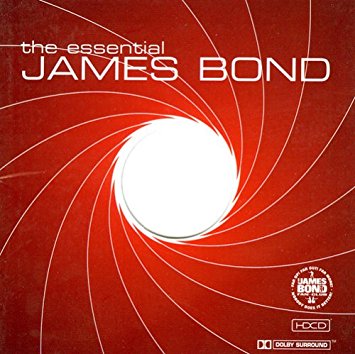 This is a compilation conducted by Nic Rains (he is the musical arranger for John Barry) and recorded by the City of Prague`s Philarmonic Orchestra. It covers all the movies from Dr. No to Goldeneye plus some extra additional suites and arrangments. It is recorded in Dolby Surround Sound and the quality is quite impressive.
This is a compilation conducted by Nic Rains (he is the musical arranger for John Barry) and recorded by the City of Prague`s Philarmonic Orchestra. It covers all the movies from Dr. No to Goldeneye plus some extra additional suites and arrangments. It is recorded in Dolby Surround Sound and the quality is quite impressive.


